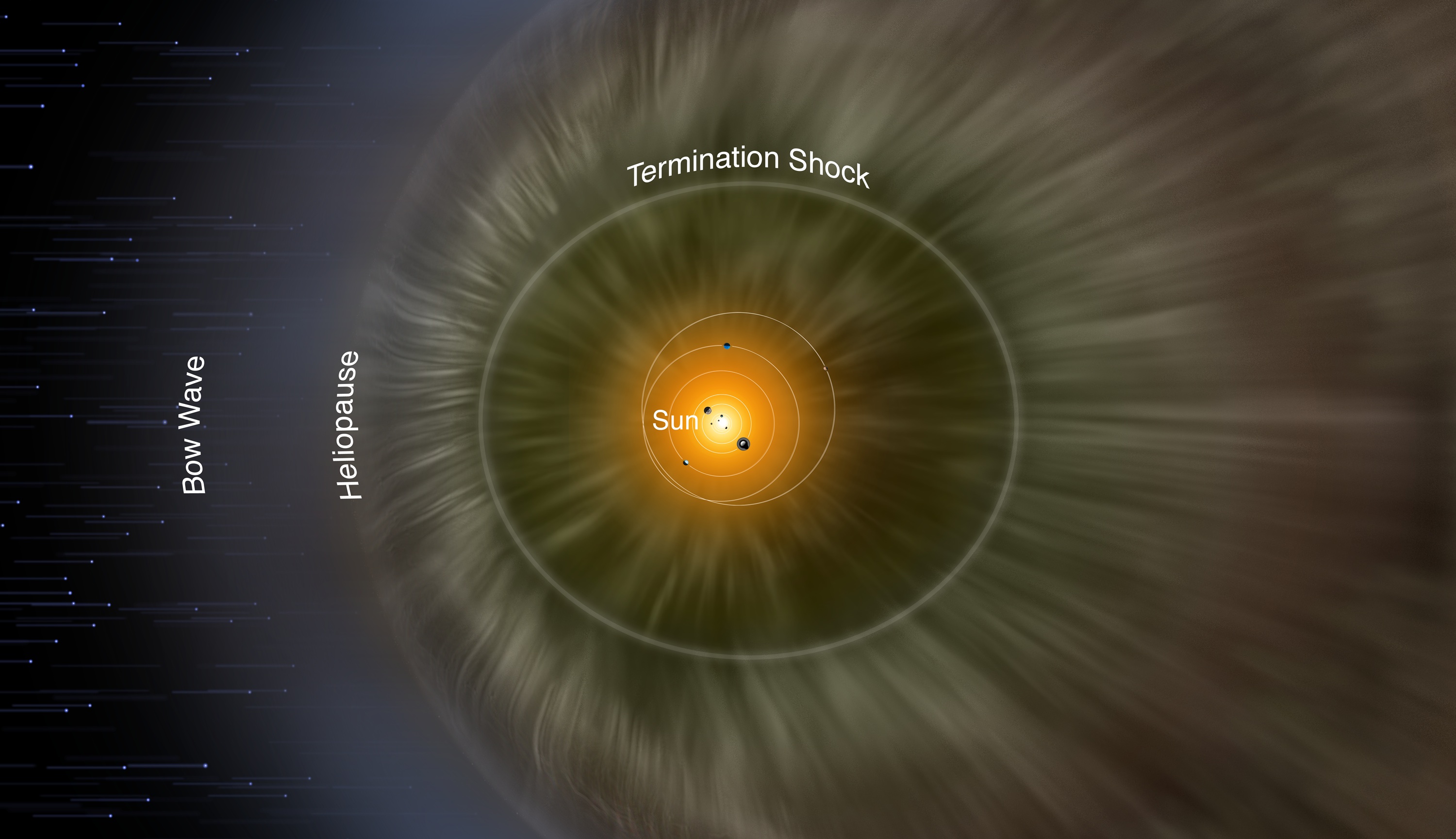New Horizons probe sees the hydrogen wall at the end of the Solar System
NASA’s New Horizons probe is on its way to its next destination. Scientists are using the interim time (when the probe is not sleeping) to evaluate the measurements of its instruments. Even before arriving at Pluto, the probe’s ultraviolet telescope might have measured a shadow of the wall of hydrogen that is expected at the outermost limit of our Solar System.
On its way through space, our Sun constantly sends out a stream of charged particles in all directions, the solar wind, which stretches around us to form a bubble we call the “heliosphere.” Far away, at a distance of approximately 100 astronomical units, the solar wind encounters the uncharged hydrogen atoms of interstellar matter. These atoms are slowed down and should therefore build up outside of the heliosphere into a kind of wall.
This wall cannot be seen directly. But it would scatter ultraviolet light in a very specific way. Thirty years ago, the two Voyager probes had picked up hints of this possibility. The instruments on New Horizons are now a whole lot more sensitive. Thus, scientists hope to finally get to the bottom of this alleged wall. The first measurements in this direction have already been positive, that is, more UV light has been detected than would otherwise be present without the hydrogen wall. However, this could also be the result of other causes. New Horizons will continue to make measurements over the course of the next ten to fifteen years.
